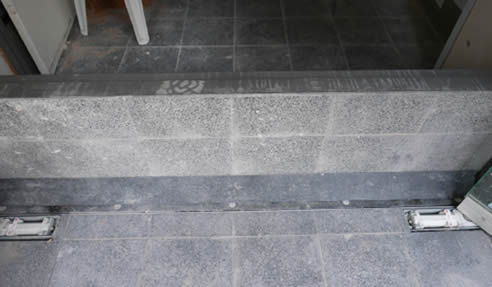Flood Proofing Buildings Against the Effects of Climate Change

21st century Australia has witnessed some of the most extreme weather events recorded in history. From the 2009 Melbourne heatwave with soaring temperatures reaching a record high of 46.4°C (115.5°F), to the devastating 2010-2011 Queensland floods. With climate change in our midst, it's almost certain that we will continue to see such events.
Adapting to Climate Change
According to Australian Government, Department of the Environment and Energy, "Adaptation is the principal way in dealing with the effects of climate change." Humans have survived through adaptation over the course of time. It pertains to developing precautionary measures and risk management to protect communities and strengthen the resilience of the Australian economy.
In 1998, the Australian Greenhouse Office released the National Greenhouse Strategy. In the report, the federal government acknowledged the existence and imminent impacts of climate change. It also reminded the government of the international obligation it has yet to address: to ratify the Kyoto Protocol.
The National Greenhouse Strategy mandated taking early action to reduce greenhouse emissions, develop and uptake renewable energy, increase energy efficiency by developing new codes and standards for building construction and appliances usage.
Flood Proofing Against Climate Change
The mandate trickled down right through the local city councils and development authorities. Information was disseminated through modified building code decrees which served as the guideline for flood protection for architects, engineers, design teams and property developers.

The Australian Building Code Board released a Handbook on Construction of Buildings in Flood Hazard Areas and a Standard for Construction of Buildings in Flood Hazard Areas to increase the information drive on flood protection for concerned parties to follow.
Getting Development Authority consent became stringent due to the implementations from the mandate. All new building constructions and redevelopment projects have to comply with flood protection standards for future proofing of business premises, residential properties and livelihood.
Securing Building Consent with Flooding Solutions
Planning for flood proofing isn't a daunting task if you're working with the right people. Flooding Solutions Advisory Group have decades of experience working with local city councils and consent authorities who deal with flood protection to fit within today's setting.
Development Authority is the governing body that oversees implementations with the revised building codes which include flood proofing procedures and standards. Consent is awarded to the party that complies with the following:
- Basic design requirements
- Floor height and footing system adjustments
- Enclosures required for structures below the Flood Hazard Level
- Requirements for structural attachments, utilities and egress
- Flood mitigation like flood protection products
- Assessment and redevelopment of building structures
Flooding Solutions Advisory Group doesn't just offer a range of world-class flood protection products, Flooding Solutions design and integrate flood barriers into the building façade without compromising aesthetics.
Flooding Solutions is backed by expertise, knowledge, proven innovation and ability to integrate flood proofing barriers into a building design, which is beneficial to major specifiers like architects, developers and end users.
For seamless flood proofing and protection against climate change, consult with Flooding Solutions now.

|





 Glass Window Flood Barriers by Flooding
Glass Window Flood Barriers by Flooding Self Closing Flood Roller Barrier for
Self Closing Flood Roller Barrier for Flood Protection Barriers Queensland
Flood Protection Barriers Queensland Entry Flood Barriers for Parramatta
Entry Flood Barriers for Parramatta Organic Self-closing Flood Barriers from
Organic Self-closing Flood Barriers from Automatic Recessed Flood Barriers from
Automatic Recessed Flood Barriers from Automatic Drop-down Flood Barriers from
Automatic Drop-down Flood Barriers from Flood Barriers for Heavy Vehicle Areas
Flood Barriers for Heavy Vehicle Areas Passive Flood Barriers for Apartments by
Passive Flood Barriers for Apartments by Expanding Panel Floodgates from Flooding
Expanding Panel Floodgates from Flooding Flood Roller Doors for Medical Centres
Flood Roller Doors for Medical Centres Hyflo Passive Flood Barriers for
Hyflo Passive Flood Barriers for 24/7 Flood Doors Approved Nationwide
24/7 Flood Doors Approved Nationwide Flood Protection for Monash Medical
Flood Protection for Monash Medical High End Retail Drop Down Flood Barriers
High End Retail Drop Down Flood Barriers Automated Drop-Down Flood Barriers from
Automated Drop-Down Flood Barriers from Low Profile Flood Barriers for
Low Profile Flood Barriers for Hyflo Self Closing Flood Door from
Hyflo Self Closing Flood Door from 24/ 7 Flood Doors for Buildings |
24/ 7 Flood Doors for Buildings | How do Hyflo Self Closing Flood Barriers
How do Hyflo Self Closing Flood Barriers
